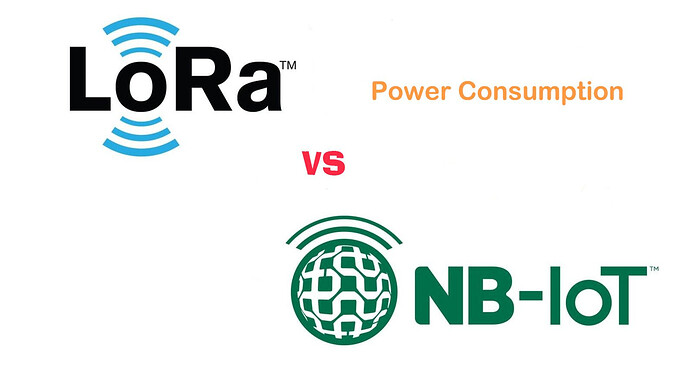The difference in power consumption between LoRa and NB-IoT primarily stems from their different underlying technologies and use cases. Here’s a comparison of the power consumption characteristics.
-
LoRa (Long Range):
-
Low Power Consumption: LoRa devices are designed for low power consumption, particularly in their standby or sleep modes. They consume minimal power when not actively transmitting or receiving data.
-
Long Battery Life: Due to its low power consumption, LoRa devices can achieve long battery life, sometimes lasting several years on a single battery depending on usage patterns and battery capacity.
-
Intermittent Communication: LoRa is well-suited for applications that involve intermittent communication, such as sending periodic sensor readings or alarms. Its low power consumption allows devices to remain dormant for extended periods between transmissions.
-
Energy-Efficient Modulation: LoRa’s modulation scheme, Chirp Spread Spectrum (CSS), is energy-efficient, allowing for long-range communication with minimal energy expenditure.
-
-
NB-IoT (Narrowband Internet of Things):
-
Optimized for Low Power: NB-IoT is also optimized for low power consumption, particularly in its extended discontinuous reception (eDRX) and power-saving mode (PSM) features.
-
Battery Life: NB-IoT devices can achieve long battery life similar to LoRa devices, particularly when leveraging eDRX and PSM modes effectively. The duration of battery life depends on factors such as the device’s duty cycle and transmission frequency.
-
Continuous Connectivity: NB-IoT is designed to maintain continuous connectivity with the cellular network, which may result in slightly higher power consumption compared to LoRa during active communication sessions.
-
Cellular Integration: NB-IoT devices benefit from integration with existing cellular infrastructure, which may provide advantages in power efficiency when devices are in range of cellular base stations.
-
-
Factors Influencing Power Consumption:
-
Use Case and Duty Cycle: The specific use case and duty cycle of the IoT device significantly impact power consumption. Devices with infrequent transmissions and long sleep periods tend to have lower overall power consumption.
-
Transmit Power and Range: Transmitting at higher power levels and over longer distances can increase power consumption for both LoRa and NB-IoT devices. Optimal transmission settings balancing range and power usage are essential.
-
Sleep Mode Efficiency: Both LoRa and NB-IoT devices often spend a significant portion of their time in sleep mode to conserve power. The efficiency of sleep modes and wake-up mechanisms can influence overall power consumption.
-
In summary, both LoRa and NB-IoT technologies are optimized for low power consumption, allowing for long battery life in IoT devices.
LinkedIn: ![]()
